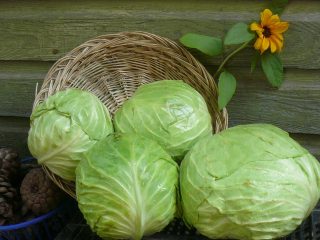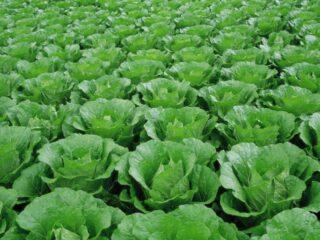Content
Cabbage varieties that are resistant to clubroot make it possible to harvest a full harvest. As a rule, these are varieties of medium and late ripening. They form heads of cabbage in the period from 80 to 140 days. The yield is very high and often reaches 5-7 kg per square meter. The main representatives that you can grow for yourself and for sale are described in the article.
Kill-resistant varieties of white cabbage
Clubroot is an infectious pathology caused by both fungi and bacteria. Because of it, swellings and other formations appear on the surface of the roots, which interfere with the flow of water and nutrients.
Such cabbage can be eaten, but the plants will weaken and the yield will inevitably decrease. There are quite a few cabbages that are resistant to clubroot. These are both varietal representatives and hybrids obtained by crossing different series. The most popular among summer residents are described in detail in the following sections.
Taininskaya F1
Taininskaya F1 is a mid-season variety that produces a harvest within 90 days.If you plant seeds for seedlings in early April, you can remove the heads in the first half of July. The variety is resistant to clubroot and is rarely affected by other diseases.
It produces large round heads of cabbage with an average weight of 2.5 kg, but often reaches up to 4 kg. The forks have an attractive presentation, the stalks are short in length. The leaves fit tightly, the root system is well developed.

The heads retain crispness when fermented
Moscow late
Moscow late is one of the classic varieties of white cabbage, resistant to clubroot. It was introduced back in 1937 and is widespread everywhere. They are grown in different regions from the middle zone and the North-West to Siberia and the Far East. Ripening is later, usually occurs in the period from 120 to 140 days. Much depends on agricultural conditions and weather.
Late Moscow cabbage is not prone to clubroot and is rarely affected by other diseases. It produces large wrinkled foliage, round or oval forks, the color is gray-green, the waxy coating is weak but noticeable. The edges of the leaves are smooth. There are few veins, they are rough to the touch.

Moscow late is a classic variety that has been successfully grown for many years
The main advantage of this clubroot resistant variety is its large heads. Even the average weight is very large - about 10-15 kg. Moreover, some specimens even reach 18 kg. The color is classic white with yellowish tints. The taste is excellent, the variety is suitable for both fresh consumption and fermentation.
Harvest
Harvest is a white cabbage variety that is resistant to clubroot and other pathologies.The forks are large, reaching 4.5 kg. Juicy, with good taste. Ideal for fermentation. They ripen for quite a long time - in 150 days.

The yield is high - from 6 to 8.5 kg per square meter
The culture is also distinguished by its good shelf life - if storage conditions are met, it can last until March.
Hope
Cabbage varieties that are resistant to clubroot include both hybrids and cultivars. One of the representatives is Nadezhda. The heads of cabbage are oval, sometimes flattened, with a dense structure. Disease resistance is satisfactory. After transplantation, seedlings are recommended to be treated with a fungicide for prevention. They are consumed mainly fresh in autumn, winter and early spring. 4The harvest can be used for fermentation
The bush produces a medium-sized rosette of leaves with semi-raised leaves. It reaches 60-70 cm in diameter. The foliage is medium, with smooth edges. Small and medium wrinkles are visible on the surface.
Tequila F1
Tequila F1 is a hybrid resistant to various infectious pathologies. It matures in 85 days, the heads of cabbage weigh about 3 kg. They have an almost perfect symmetrical shape with aligned edges. Characterized by good keeping quality. can be consumed fresh for a long time.
Winter Gribovskaya
There is also a variety of cabbage that does not suffer from clubroot, such as Winter Gribovskaya. It belongs to the medium varieties, ripens in 125 days. The plant is moisture-loving and needs constant watering, although it can also tolerate drought. The heads of cabbage are round, the weight reaches 4.5 kg. The foliage is pale green, white when cut. Transports well, shelf life is satisfactory - up to three months. The heads of cabbage are marketable and can be grown for sale.

The Zimnaya Gribovskaya variety produces very large forks
Kilaton
Quilaton is a late ripening hybrid. The forks are fully formed in 140 days. The plants produce a compact, raised rosette of leaves. The foliage is small, gray-green in color, and has a waxy coating.

The mass of heads of cabbage is quite large - from 3 to 4 kg
The pulp is whitish when cut. Rarely affected by clubroot. The variety is also resistant to other diseases (subject to proper growing conditions).
Kylazol F1
Kilazol F1 (Kilazol) is another hybrid that is resistant to various pathologies. According to the timing of ripening, it belongs to the late representatives. The harvest is formed in 135 days. It has good shelf life, so it can be stored in winter. 7Suitable for preparations, fermentation
Kilagreg
Kilaggreg is another hybrid variety with satisfactory immunity. It produces a harvest within 100 days from the moment of seedling formation. Heads of cabbage weigh on average 3-4 kg, are quite large, marketable, with straightened edges.8 The variety is resistant not only to clubroot, but also to Fusarium wilt. It is not affected by thrips. Recommended for cultivation on private farms, especially for summer residents with little experience.
Losinoostrovskaya 8
Losinoostrovskaya 8 (Losinoostrovskaya 8) is a well-known cabbage hybrid that is resistant to clubroot and viral pathologies. In terms of ripening time, it belongs to the middle varieties - the harvest is formed within 90-100 days. The foliage is large, with a light shade. Heads of cabbage weighing about 3-3.2 kg. The stalks are medium in size and have a sweetish taste. The yield rate is very high - from 5 to 8 kg per square meter.
If the weather permits, it is better to harvest in the second half of September and until the first days of October.

Cabbage of this variety is especially useful when eaten fresh.
The heads contain a lot of fiber, which improves digestion. Used in regular and dietary menus.
Kill-resistant cauliflower varieties
Some summer residents successfully grow cauliflower. The culture is unpretentious, grows well both in open beds and in greenhouses. Among the varieties of cauliflower resistant to clubroot are the following:
1. Clapton F1 - a variety that ripens in 80 days. Produces very large heads up to 2.5 kg. It can be grown both in summer and early autumn. The heads are attractive, white, and not affected by clubroot.2. Clarify F1 is a hybrid with good resistance to clubroot. Ripens in 75 days, produces large heads weighing up to 3 kg. It develops normally even in unfavorable weather conditions. When growing, do not apply too much nitrogen fertilizer.3. Skywalker F1 is a late-ripening variety, with inflorescences appearing in 95 days. The yield is up to 5.6 kg per square meter. Moreover, each head can weigh up to 3.5 kg. Excellent taste, satisfactory resistance to clubroot.4. Fremont F1 is another variety with good immunity. Produces large inflorescences weighing up to 3 kg with high density and delicate texture. Coloring in milky white shades.

Skywalker is one of the hybrids with good immunity to clubroot
Cabbage varieties resistant to clubroot for the Moscow region
In the climatic conditions of the Moscow region and other regions of central Russia, cabbage of various varieties and hybrids grows well. Therefore, the choice is quite large. If we single out the most resistant crops to clubroot, we get the following rating:
1. Albatross F1 (Albatross) – late maturing, immune to clubroot, bacteriosis, and blackleg. You can grow it both for yourself and for sale, including on a large scale.2. Galaxy F1 (Galaxy) is another late hybrid with good resistance to clubroot. The heads of cabbage are dense and retain their shape even during long-term transportation.3. Transam F1 (Transam) is a Dutch hybrid that produces large heads of cabbage weighing up to 2.9 kg. Ripening proceeds smoothly, the forks are tight and do not crack. The shape is leveled and symmetrical. Has immunity to clubroot and other pathologies.4. Bingo F1 (Bingo) is a late white cabbage with immunity to clubroot and other diseases. The heads of cabbage are symmetrical, marketable, fairly dense.5. Rusinovka is a mid-late variety. Characterized by high yield, resistance to clubroot and blackleg. However, it may suffer from bacteriosis. It has a very good taste and is used fresh and fermented.6. Kalorama F1 (Kalorama) is a late-ripening hybrid, resistant to clubroot and other pathologies. Summer residents appreciate it for its good taste. Another plus is its attractive appearance. The heads of cabbage are symmetrical, with aligned edges.

Galaxy is a hybrid suitable for growing in the Moscow region
Conclusion
Cabbage varieties resistant to clubroot help protect plantings from a dangerous infectious disease. As a rule, these are hybrids obtained from crossing different representatives. They not only have good immunity, but also resistance to adverse weather, temperature changes and drought.
Reviews of cabbage varieties resistant to clubroot








